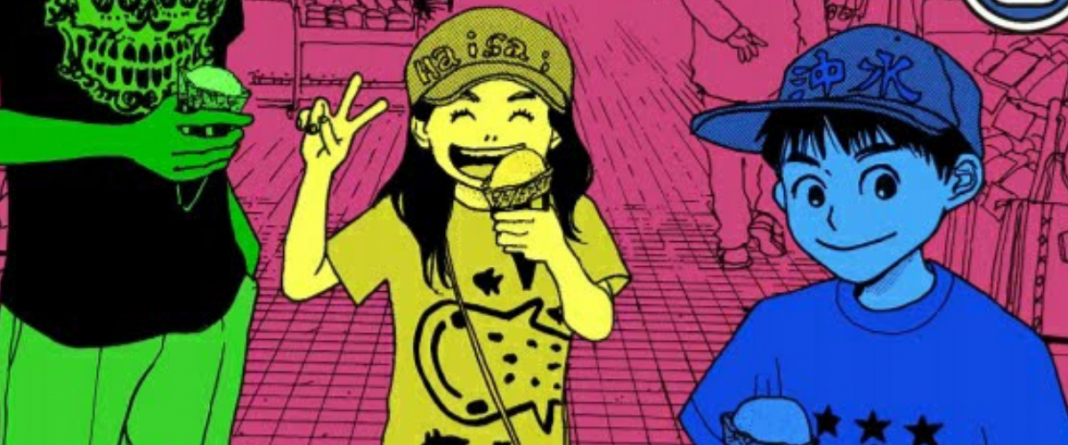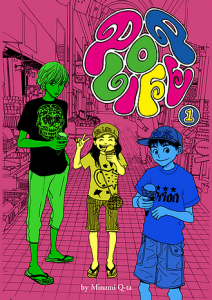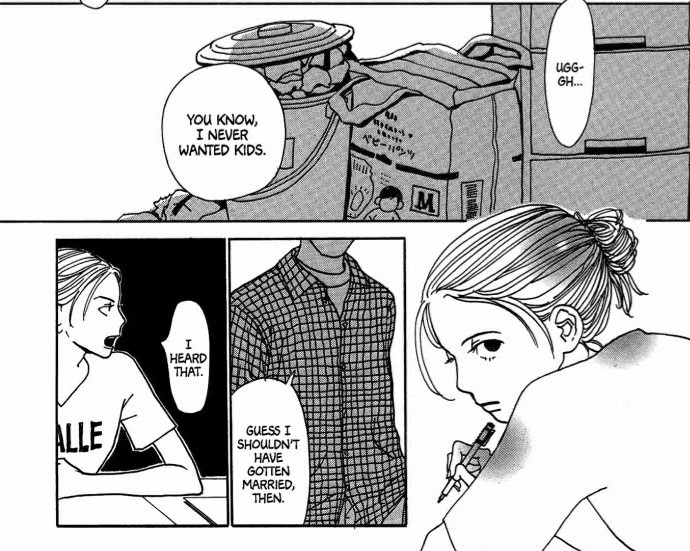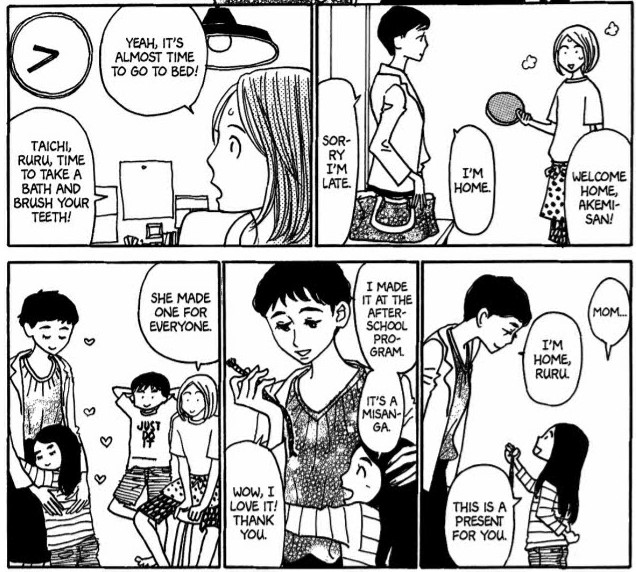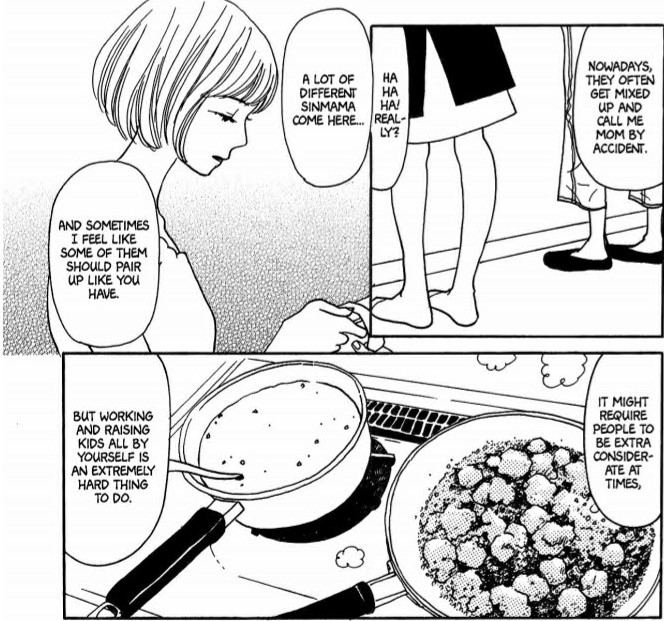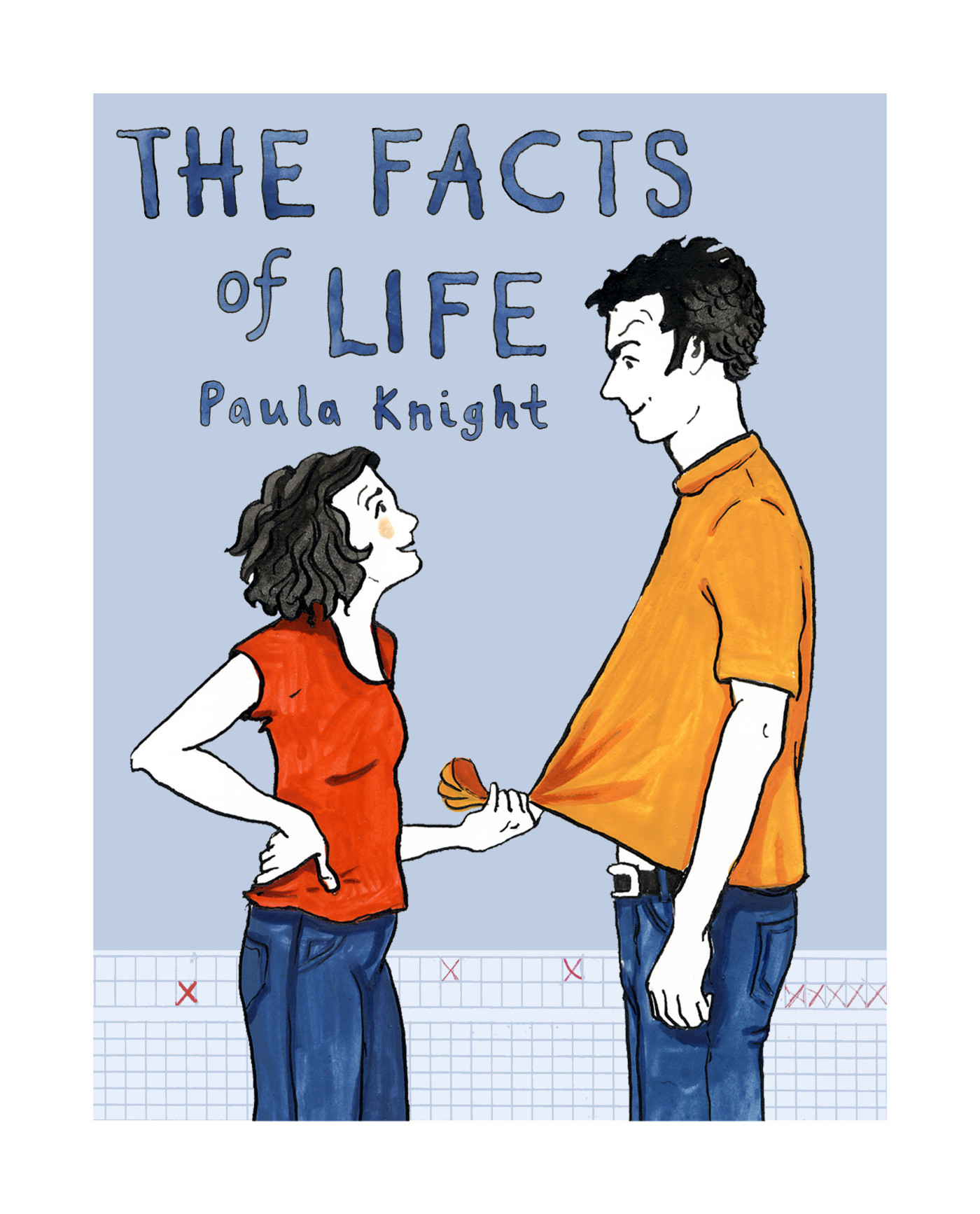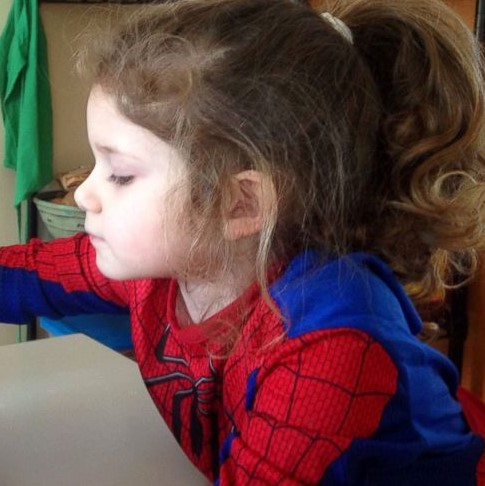 Pop Life
Pop Life
Story & Art: Minami Q-ta
Translation: Dan Luffey
Lettering: Meg Argyriou
Cover Design: Robert Battersby
Project Manager: Matt Haasch
Publisher: Star Fruit Books
It is overly simplistic to say that motherhood is challenging. Aside from bearing and birthing a child, becoming responsible for a whole human life is both an immense privilege and a terrifying undertaking. Parenting works best as part of a team, but some parents lose their partners through divorce or death, leaving them stranded to raise children alone. In Minami Q-ta’s Pop Life, two women in their forties decide that the solution to their mutual problem of being spouseless is to move in together and co-parent their children.
Kitano Sakura is a manga creator who is enjoying some time off of regular work. Her son, Kaede, is sixteen years old. At the beginning of the manga, readers watch Sakura in a flashback sequence scrambling to meet a deadline, a much younger Kaede wanting her attention, and her useless husband complaining that he never wanted kids. It’s no mystery why she’s been raising Kaede on her own. When her longtime drinking buddy, event company employee Chiba Akemi, comes to her with little Taichi and Ruru and the news that she left her husband, Sakura welcomes them into her home.
Their apartment is small, only two bedrooms. Akemi and her kids get one room, Kaede gets the other, and the living area is a studio space for Sakura, who sleeps on the couch. Perhaps it’s not the ideal living situation, but Pop Life is far from being a sob story about single mothers living in squalor. On the contrary, Sakura seems to really enjoy keeping house, raising her killifish, and acting like a second mother to Taichi and Ruru (she says it’s kind of like being a grandmother, considering her own son is pretty much all grown up). It initially seems like Kaede might be an ornery teen, but he’s just kind of quiet and sleepy, a later chapter showing a new side of his personality through his interests in cooking and shogi.
Pop Life is a slow, gentle, down-to-earth manga, happy and meandering. It takes women thrown into a difficult situation, one that is likely a blow to their self-confidence and ideas of self-sufficiency, and proves that they can overcome hardship by helping each other. Sakura and Akemi are not romantically involved, but they are both absolutely parents to each other’s children; Sakura even gets on a plane to Hokkaido to pick Ruru up from a school trip when she falls ill. The manga makes an excellent case for a non-traditional family structure, one where everyone pitches in and does their part regardless of their biological connection to each other. And aside from Taichi and Kaede, it is a manga full of almost only female characters, generally other moms who are taking part in their community and enjoying each other’s company.
Minami’s artwork is fun, reminiscent of a simplified Yoshinaga Fumi, by turns delicate and bold, and giving special detail to mealtime scenes. Minami is a divorced mother herself, so perhaps there is some of her to be seen in single manga mom Sakura. Pop Life is the first of her works to be licensed in English, and is the debut publication of Star Fruit Books.
Young readers who are used to high-powered shonen adventure manga will perhaps be underwhelmed by Pop Life, but it fills a niche for the older manga readers who are looking to see people more like themselves in the books they read. Fans of slice of life series like What Did You Eat Yesterday? or Barakamon will enjoy the everyday exploits of this odd family who clearly cares for each other very much. Readers can find the first volume of Pop Life available digitally through Star Fruit Books’ website. This is the only title of theirs available at the time this review is being written, but fans of small press and indie manga should eagerly anticipate further works from this promising newcomer. They announce new works regularly on their Twitter page.


